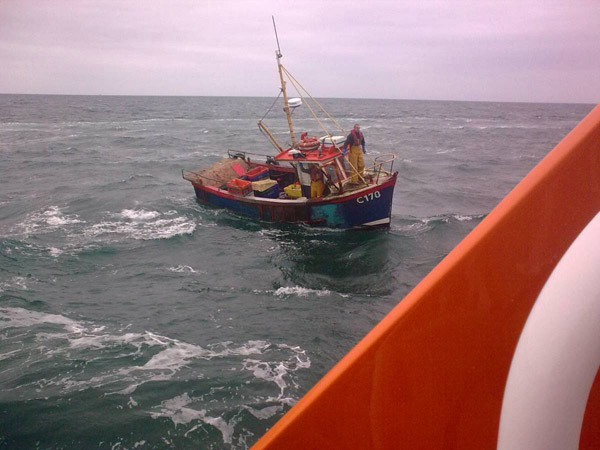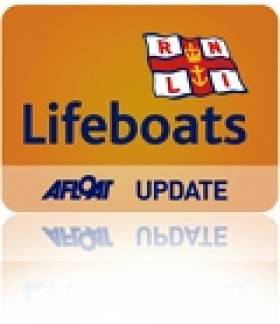Displaying items by tag: Tamar
First Rescue for Kilmore's Tamar Lifeboat
Along with Coxswain Eugene Kehoe, lifeboat mechanic Brian Kehoe and two Kilmore Quay lifeboat crew were Divisional Inspector Gareth Morrison and Divisional Engineer David Murrin, who also took part in the callout. The Tamar is currently at sea every day for training to ensure all the volunteer crew members are fully trained on the new lifeboat.
Commenting on the first callout for the Tamar Deputy Divisional Inspector Gareth Morrison said, " The new lifeboat performed superbly. The extra speed in responding to callouts along with the improved radio direction finding equipment helped us locate the casualty vessel very quickly. On a bad night and in challenging conditions this will make a huge difference for the lifeboat volunteers."
Over fifty percent of Kilmore Quay's callouts are to fishing vessels. The new Tamar class lifeboat is 16.3 metres in length with a maximum speed of 25 knots compared to the 14.3 metres of the Tyne class lifeboat stationed at Kilmore Quay, which has a maximum speed of 18 knots. The lifeboat is self-righting and is fitted with an integrated electronics Systems and Information Management System, which allows the lifeboat crew to monitor, operate and control many of the boats systems from shock mitigating seats.

Photo: courtesy of Kilmore Quay RNLI
Tamar-Class Lifeboat Visits Irish Waters
The Tamar-class lifeboat is the latest in a series of high-tech craft within the RNLI lifeboat fleet and in use throughout the UK. The class is named after the River Tamar, Cornwall and like other lifeboats, they are named after large rivers, writes Jehan Ashmore.
To date 17 Tamar-class boats have been commissioned for the lifesaving institution. Some of the Tamar class fleet are constructed exclusively for the purposes of providing relief-duties across the extensive network of stations. One of these relief lifeboats, RNLB Frank and Ann Wilkinson (16-06) arrived at Dun Laoghaire on 17 July. The relief Tamar's transit took two-days to reach the harbour from the RNLI's headquarters based at Poole. The lifeboat called at Plymouth for bunkers and made an overnight stay at Penlee prior to arriving at Dun Laoghaire, where another fuel-stop was undertaken.
The craft carried-out training exercises in Dublin Bay, which included a couple of trainees from the Dun Laoghaire lifeboat crew. The Tamar class lifeboat was in Irish waters primarly to cater for other station crews within the divisional staff training programme. There are no Tamar-class lifeboats operating in Irish waters, at present, though the RNLI have plans to introduce the class.

Tamar-class relief lifeboat RNLI Frank and Ann Wilkinson (16-06) nearing Dun Laoghaire. Photo © Jehan Ashmore/ShipSNAPS
Related Safety posts
RNLI Lifeboats in Ireland
Safety News
Rescue News from RNLI Lifeboats in Ireland
Coast Guard News from Ireland
Water Safety News from Ireland
Marine Casualty Investigation Board News
Marine Warnings





























































